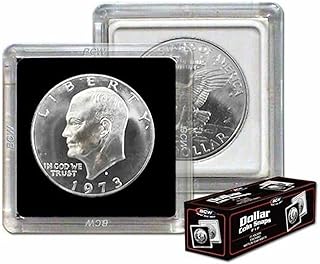The Lincoln Wheat Penny, first introduced to the American public in 1909, occupies a venerable place in the annals of numismatics. Esteemed not only for its design but also for its historical significance, this one-cent piece marks a turning point in United States coinage, being the first to bear the likeness of a former president. From its conception to its eventual retirement from production, the Lincoln Wheat Penny continues to be a jewel in the crown for coin enthusiasts.
The Lincoln Wheat Penny, first introduced to the American public in 1909, occupies a venerable place in the annals of numismatics. Esteemed not only for its design but also for its historical significance, this one-cent piece marks a turning point in United States coinage, being the first to bear the likeness of a former president. From its conception to its eventual retirement from production, the Lincoln Wheat Penny continues to be a jewel in the crown for coin enthusiasts.
Commemoration of Abraham Lincoln
This coin was conceived as a tribute to one of America's most revered leaders, Abraham Lincoln, in conjunction with the centennial celebration of his birth. In lieu of a traditional monument, the U.S. Mint engaged the talents of the esteemed sculptor Victor D. Brenner, whose deft hands crafted the iconic image that graces the penny’s obverse. The reverse presents an agricultural motif of considerable grace: two ears of durum wheat encase the denominational legend and the national identifiers, all surmounted by the Latin maxim "E PLURIBUS UNUM."
A Time of Change
The lifespan of the Lincoln Wheat Penny coincided with periods of significant upheaval and evolution in society. Minted primarily in 95% copper up to 1943, these pennies underwent a temporary transformation during the peak of World War II. The exigencies of war demanded copper for other uses, compelling a one-year switch to zinc-coated steel planchets. The steel pennies of 1943 are anomalies, coveted by collectors, particularly those extraordinary few struck mistakenly with the prior year's copper planchets—rarities that command astonishing prices in the collectors' market.
The Post-War Era and The End of the Wheat Back
Upon the war’s conclusion, the penny's composition reverted to its pre-war copper standard. Yet the winds of change continued to blow, with a new design by Frank Gasparro embossed on the reverse beginning in 1959, retiring the Wheat Penny's distinctive image. Notwithstanding this, the final Lincoln Wheat Penny, issued in 1958, remains a valued collector's piece.
Rare Varieties and their Values
Among the diverse iterations of the Lincoln Wheat Penny, several unique varieties are especially prized. For instance, the introductory 1909 edition bore Brenner’s initials “V.D.B.” on the reverse, resulting in both the 1909-S VDB and the 1909 VDB pennies. Public opinion, however, viewed the initials as overly prominent, leading to their swift removal; they would only reappear in 1918, discreetly placed on the obverse.
A remarkably notable variety is the 1958 Double Die Obverse, distinguished by a clear doubling of the obverse design. The extreme rarity and distinctiveness of this error have propelled it to record-setting auction prices, with one example clinching $336,000.
Judging a Penny's Worth
Determining the Value of Wheat Pennies
The assessment of a Lincoln Wheat Penny's value is a multifaceted exercise, influenced considerably by the coin's condition and scarcity. General circulation pieces might attract only modest interest, but pristine examples, particularly those with recognized rarities, can reach substantial sums in collector markets.
Notable Valuations
Consider these valuations for Lincoln Wheat Pennies in top condition (graded MS60 or better):
- 1917 Doubled Die: Worth $3,000 - $6,000
- 1955-P DDO (Doubled Die Obverse): Worth $4,000 - $16,000
- 1922-D No D, Strong Reverse: Worth $12,000 - $30,000
- 1944-P Steel: Potentially exceeding $50,000
- 1944-D Steel: Potentially exceeding $60,000
- 1958-P DDO: Ranging from $100,000 to $200,000
- 1943 Bronze: Valued above $300,000
- 1943-S Bronze: Valued above $500,000
- 1944-S Steel: Valued from $700,000 to $1,000,000 or higher
- 1943-D Bronze: Valued from $800,000 to $2,000,000 or higher
Given the volatile nature of the market, these valuations are subject to change based on prevailing economic circumstances and collector interest. The true worth of any coin hinges on its uniqueness, evidenced by rarity or unusual characteristics.
Crucial Considerations for Collectors
For those delving into this niche, understanding the key dates and mint marks of the Lincoln Wheat Penny series is imperative. Dates such as 1909-S, 1909-S VDB, 1914-D, 1922 Plain, and 1931-S carry historical and numismatic significance that elevates their status among collectors.
Prudent investment in coin collecting requires informed decisions. It is advisable to seek expertise from qualified professionals or consult established reference materials to determine an accurate valuation of a particular Lincoln Wheat Penny.
Preserving a Legacy
Handling these small treasures with care is crucial; maintaining their condition ensures their enduring appeal and financial worth. The Lincoln Wheat Penny's enduring charm lies not just in its potential monetary gain but in its representation of a bygone era, a tangible link to America's rich history, and a testament to the artistry of coin design. Whether one's interest in coin collecting is fledgling or expert, the pursuit of Lincoln Wheat Pennies promises a rewarding and educational experience.
The Lincoln Wheat Penny remains an emblematic representation of American numismatics. Its significance extends beyond the mere titular face value, encompassing a rich tableau of the nation’s past and the narrative of its people. Collectors cherish these coins for their varied histories, delightful designs, and the thrill of the hunt for those elusive and rare specimens. For both novices and seasoned numismatists, Lincoln Wheat Pennies offer a gateway to the past, and a potentially lucrative pastime. With meticulous care and knowledge, the world of coin collecting can yield both joy and treasure in the palm of one's hand.
Information for this article was gathered from the following source.




